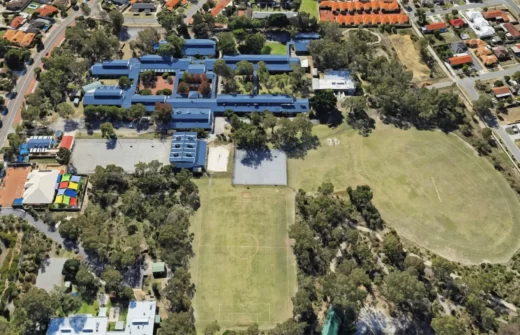In the Mathematics learning area, students learn about mathematics, what it is and how it is used in making decisions and solving problems. Mathematics involves observing, representing and investigating patterns and relationships in social and physical phenomena and between mathematical objects themselves:
The Mathematics Learning Area takes a major, although not sole, responsibility for the development of students’ numeracy. Students should learn to read, write and speak mathematics in a variety of contexts and forms so that they can interpret and convey mathematical ideas, understand prose containing mathematical forms, and continue to use and learn mathematics autonomously. Whether dealing with familiar or unfamiliar tasks, they need to:
- recognise when mathematics might help;
- choose appropriate mathematics;
- decide on levels of precision and accuracy;
- do the mathematics;
- interpret the results; and
- judge the reasonableness of results and appropriateness of the methods used.
Mathematics can enhance our understanding of the world and the quality of our participation in society. Since it is valuable to us individually and collectively, it should be an integral part of the general education of every young person.
Years 7 – 10 Mathematics
Secondary school mathematics marks a shift in mathematics learning to more abstract ideas. Through critical activities such as the exploration, recognition and application of patterns, the capacity for abstract thought can be developed, and the ways of thinking associated with abstract ideas can be illustrated.
The foundations built in previous years prepare students for this change. Previously established mathematical ideas can be drawn upon in unfamiliar sequences and combinations to solve non-routine problems and to develop more sophisticated mathematical ideas consequently.
The WA curriculum in Mathematics is divided into three major content strands, which are Number and Algebra, Measurement and Geometry and Statistics and Probability.
- Number and Algebra
Number and Algebra are developed together, as each enriches the study of the other. Students apply number sense and strategies for counting and representing numbers. They explore the magnitude and properties of numbers. They apply a range of strategies for computation and understand the connections between operations. They recognise patterns and understand the concepts of variable and function. They build on their understanding of the number system to describe relationships and formulate generalisations. They recognise equivalence and solve equations and inequalities. They apply their number and algebra skills to conduct investigations, solve problems and communicate their reasoning.
- Measurement and Geometry
Measurement and Geometry are presented together to emphasise their relationship to each other, enhancing their practical relevance. Students develop an increasingly sophisticated understanding of size, shape, relative position and movement of two-dimensional figures in the plane and three-dimensional objects in space. They investigate properties and apply their understanding of them to define, compare and construct figures and objects. They learn to develop geometric arguments. They make meaningful measurements of quantities, choosing appropriate metric units of measurement. They build an understanding of the connections between units and calculate derived measures such as area, speed and density.
- Statistics and Probability
Statistics and Probability initially develop in parallel and the curriculum then progressively builds the links between them. Students recognise and analyse data and draw inferences. They represent, summarise and interpret data and undertake purposeful investigations involving the collection and interpretation of data. They assess likelihood and assign probabilities using experimental and theoretical approaches. They develop an increasingly sophisticated ability to critically evaluate chance and data concepts and make reasoned judgments and decisions, as well as building skills to critically evaluate statistical information and develop intuitions about data.
Years 11-12 Upper School Mathematics
There are three mathematics courses offered at Balga Senior High School: two General and one Australian Tertiary Admission Rank (ATAR) course. Each course is organised into four units. Units 1 and 2 are taken in Year 11. Units 3 and 4 are taken in Year 12. The Western Australian Certificate of Education (WACE) examination for each of the three ATAR courses is based on Units 3 and 4 only.
The courses are differentiated, each focusing on a pathway that will meet the learning needs of a particular group of senior secondary students.
- Mathematics Foundation is a course which focuses on building the capacity, confidence and disposition to use mathematics to meet the numeracy standard for the WACE. This course is for students who have not demonstrated the numeracy standard in the OLNA. It provides students with the knowledge, skills and understanding to solve problems across a range of contexts including personal, community and workplace/employment. This course provides the opportunity for students to prepare for post-school options of employment and further training
- Mathematics Essential is a General course which focuses on using mathematics effectively, efficiently and critically to make informed decisions. It provides students with the mathematical knowledge, skills and understanding to solve problems in real contexts for a range of workplace, personal, further learning and community settings. This course provides the opportunity for students to prepare for post-school options of employment and additional training.
- Mathematics Applications is an ATAR course which focuses on the use of mathematics to solve problems in contexts that involve financial modelling, geometric and trigonometric analysis, graphical and network analysis, and growth and decay in sequences. It also provides opportunities for students to develop systematic strategies based on the statistical investigation process for answering statistical questions that involve analysing univariate and bivariate data, including time series data.







